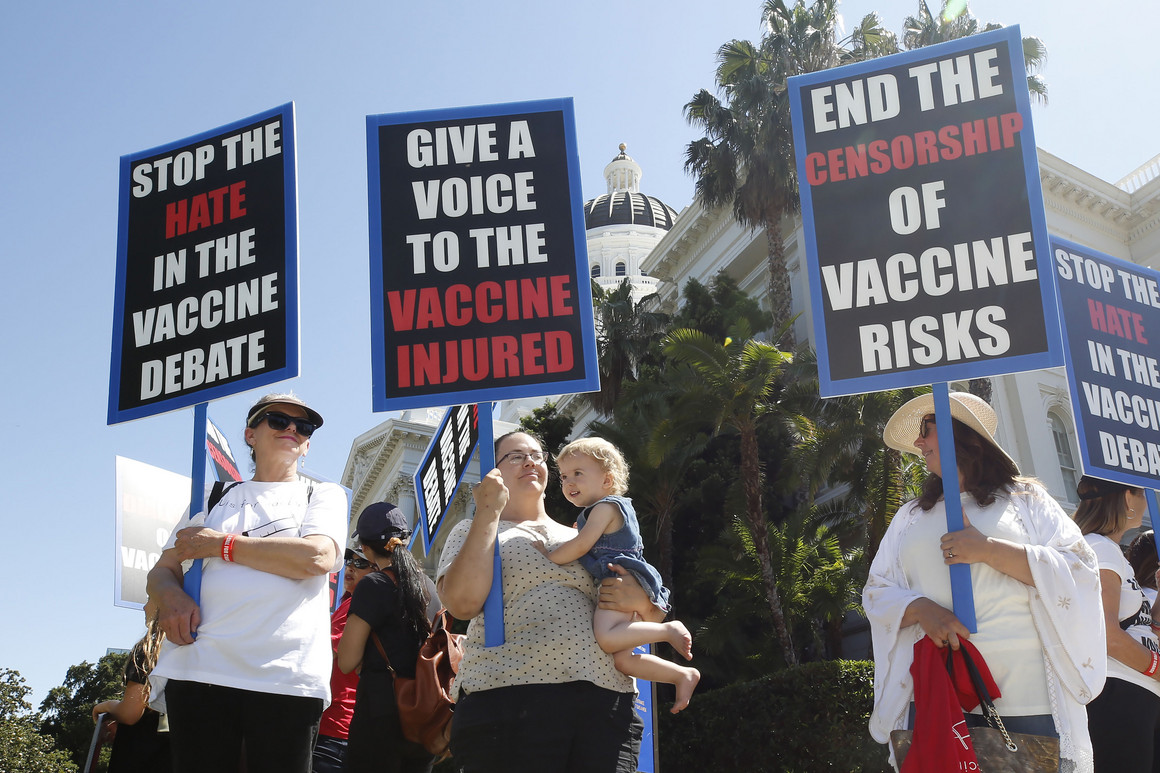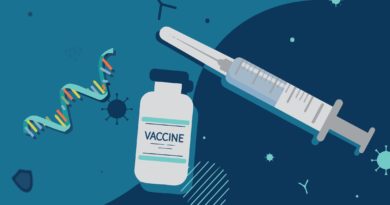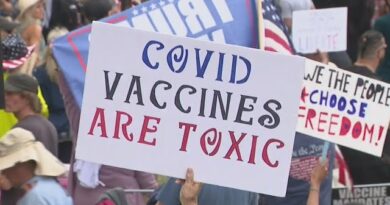From anti-vax to anti-mask: School districts brace for parent resistance

People at a demonstration calling for medical freedom against forced childhood vaccinations at the Capitol, in Sacramento, Calif. | AP Photo
SACRAMENTO — California’s anti-vaccine movement has a new target: masks.
The same parents who loudly opposed school vaccine requirements in Sacramento last year are turning their attention to mask recommendations that districts are considering as they figure out how to send kids back to the classroom in the middle of a pandemic.
Advertisement
The anti-vaccine movement has seized on mask orders and stay-at-home restrictions as similar infringements on their bodily autonomy and constitutional rights. Those arguments could complicate matters when school returns in the fall, as activists become a vocal force in opposing new mandates on student facial coverings and other preventative efforts.
“Anti-vaxxers are morphing into the anti-anything movement. It’s clear to me that some of them are going to have their children show up to schools without masks to prove their point and poke the bear,” California Assembly Education Chair Patrick O’Donnell (D-Long Beach) said in an interview. “I don’t know what authority schools will have.”
At a June legislative hearing in Sacramento on school reopening, parents wore shirts that said “Make pharma liable again” and “I don’t want a flu shot!” They voiced concerns about unfounded impacts of masks on children being able to breathe and the potential for a Covid-19 vaccine requirement down the road.
Christina Hildebrand, president and founder of A Voice for Choice, a California organization that opposes childhood vaccine requirements, said parents are against mask rules in school because of potential for detrimental social-emotional and educational impacts, like an “ingrained fear of contagion” and an inability to socialize.
“Wearing an improperly worn cloth mask is likely to have little positive additional health impact on children vs. the detrimental social, emotional and potential health issues of wearing a mask for 7-8 hours a day,” Hildebrand said in an email.
The coronavirus appears to have a lower rate of infection in children than adults, but much remains unknown about how children can spread the virus to others. Many child care centers that remained open at the height of the pandemic had success with social distancing and mask use, with little to no reports of child-to-adult transmission.
The Centers for Disease Control and Prevention recommends cloth face coverings for children over 2 years old. As part of its considerations for schools, the CDC says that face coverings should be worn by staff and students, particularly older students.
In California, Gov. Gavin Newsom has made masks a central part of the state’s bid to keep the economy open, mandating facial coverings in most public settings in hopes of avoiding another statewide shutdown as infections continue to surge. But even he is undecided on mask requirements for school students.
The California Department of Public Health has said that teachers and school staff are required to adhere to Newsom’s statewide mask order, but it’s still up to local districts to enforce it for students. State officials have highly encouraged students to wear masks but have so far avoided requiring it, while superintendents clamor for clearer guidance to avoid being inundated with lawsuits. Newsom signaled last week that decision is still up in the air.
Anti-vaccine activists joined conservatives and small business owners in protests over stay-at-home orders designed to curb the spread of the virus. They have also been involved in the harassment of public health officials whose job is to enforce those orders.
Despite no proof of any serious harm caused by masks for the general public, that narrative has continued in the form of arguments for constitutional rights across the nation. Footage of a public hearing regarding a mask mandate in Florida went viral last week after Palm Beach County residents argued that masks are “killing people.”
Rupali Limaye, an associate scientist at the Johns Hopkins Bloomberg School of Public Health, said the anti-vaccine movement is growing and evolving in the pandemic, merging with outrage about government oversight because of mask mandates and quarantine orders.
“We hear this from these parents all the time — I know what’s right for my kid, you do not. What we’ve seen is this idea that science is just another voice in the room,” Limaye said. “Now, because of what’s going on with Covid-19, unfortunately from a science perspective, their voices are getting stronger.”
The anti-vaccine movement reached a crescendo in California last year after the state tightened its requirements for student enrollment by eliminating most medical exemptions. Lawmakers responded to a cottage industry of doctors who had been signing papers allowing families to avoid vaccines and still send their children to public schools.
The crackdown was championed by state Sen. Richard Pan, a Sacramento pediatrician who has led the fight for more state vaccination requirements. While many anti-vaccine protesters were peaceful, a handful turned aggressive. One shoved Pan on a street near the state Capitol, while another tossed a cup of menstrual blood onto the Senate floor on the last night of session. The moves were condemned by Democrats, as well as Republican lawmakers who opposed stricter vaccine requirements.
“Frankly, this is an ideology that’s yielded by privilege and selfishness. What they’re actually demanding is the privilege of getting other people sick,” Pan said. “We don’t have a vaccine, so they’re opposing masks.”
When most schools do reopen their doors, they will take daily temperature checks, increase cleaning and attempt to offer a hybrid model of in-person and distance learning to accommodate social distancing and smaller group sizes. That means parents with various concerns about the virus can likely opt to keep their children home if they are able to do so. But no one is expecting that process to go smoothly.
Mask opponents will fight efforts to force their children to wear face coverings at school, while mask-supporting parents concerned about exposure will make the opposite argument. And teachers unions across the country are demanding more personal protective equipment, voicing concerns about their own health and the potential for bringing home the disease.
School districts, which have to enforce mask rules, fear the potential for liability exposure no matter what they do.
Scott Hatfield, a high school science teacher in Fresno, is already preparing for how he will address a student that refuses to wear a mask in class. The issue has become so politicized that Hatfield compares it to battles with families over teaching evolution.
“It represents an area where they feel they have the power — they’re the parent, they have the custodial rights,” Hatfield said. “But we are a public government agency. We need to do these things. And if you have issue with that, I would encourage you to take that up outside the classroom and not pick a fight with your local school and teachers.”
Illinois and Washington have announced that K-12 students must wear facial coverings when they return to class in the fall. But most states, including Florida, North Carolina and New Jersey, have recommended, but not required, masks in schools.
Unlike with vaccine regulations, schools won’t be able to so easily check medical records prior to a student’s enrollment. Instead, they will be faced with enforcing mask rules, all while teachers focus on catching students up on the learning lost since most campuses abruptly closed in March due to the pandemic.
“I’ve yet to hear of a teacher in America who wants to be a mask enforcer. The whole notion that any school district can really enforce masks, or even social distancing, I think people are not being realistic,” said Charlie Wilson, president of the National School Boards Association. “The reality is that nobody knows what to do here, and the evidence of that is that governors in virtually every state are leaving it up to local districts.”
*** This article has been archived for your research. The original version from POLITICO can be found here ***


